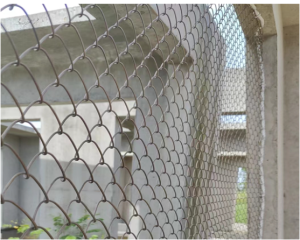Increasing the survival rate in salmon farming involves a combination of best practices in water quality management, disease prevention, feed optimization, and overall farm management. Here’s a detailed approach to achieve this:

1. Water Quality Management
- Real-time Monitoring: Use sensors and automated systems to continuously monitor key water parameters such as temperature, dissolved oxygen, pH, salinity, and ammonia levels. Maintain these within optimal ranges to reduce stress and prevent disease.
- Water Flow and Circulation: Ensure adequate water flow in pens or tanks to avoid stagnant areas where harmful substances can accumulate. Proper circulation also helps maintain oxygen levels and removes waste.
- Regular Water Exchange: Periodically exchange water in land-based systems to reduce the buildup of toxins and pathogens.
2. Disease Prevention and Control
- Biosecurity Measures: Implement strict biosecurity protocols to prevent the introduction of pathogens. This includes controlling access to farming sites, disinfecting equipment, and quarantining new stock.
- Vaccination Programs: Vaccinate salmon against common diseases such as Infectious Salmon Anemia (ISA) and sea lice infestations. This can significantly reduce mortality.
- Early Disease Detection: Regular health checks by aquatic veterinarians and the use of technology to monitor fish behavior and appearance can lead to early identification of disease, allowing for timely intervention.
3. Optimal Feeding Practices
- Balanced Nutrition: Provide high-quality, nutritionally balanced feed that meets the specific needs of salmon at different growth stages. This supports strong immune systems and healthy growth.
- Precise Feeding: Utilize automated feeding systems that adjust the amount and timing of feed based on fish size, environmental conditions, and feeding behavior. This reduces waste and minimizes stress.
- Use of Functional Feeds: Incorporate functional ingredients like prebiotics, probiotics, and immunostimulants into the feed to enhance disease resistance and overall fish health.
4. Environmental Enrichment
- Simulate Natural Habitats: Incorporate structures such as artificial reefs, vegetation, or water flow diversions within pens to mimic natural environments. This reduces stress and promotes healthier behavior.
- Light Management: Control light exposure to simulate natural photoperiods, which can reduce stress and improve growth and survival rates.
5. Selective Breeding and Genetic Improvement
- Breeding for Resilience: Engage in selective breeding programs aimed at producing salmon strains with higher resistance to diseases, faster growth rates, and better feed conversion efficiency.
- Use of Genetic Tools: Employ genetic tools like CRISPR to enhance disease resistance or stress tolerance in salmon, though this requires careful ethical and regulatory consideration.
6. Stress Reduction Strategies
- Gentle Handling: Minimize handling and use stress-reducing techniques when necessary, such as sedation during transfers. Stress management is crucial, as stress can weaken the immune system and lead to higher mortality.
- Stocking Density Management: Maintain appropriate stocking densities to reduce competition, aggression, and the spread of disease. Overcrowding is a significant source of stress and mortality in salmon farming.
7. Enhanced Monitoring and Data Analysis
- Big Data and AI: Leverage big data analytics and artificial intelligence to optimize farming operations. Analyzing trends in water quality, fish behavior, and health data can help predict issues and prevent mortality.
- Remote Monitoring: Implement remote monitoring systems that allow farm managers to oversee conditions in real-time and respond quickly to any problems.
8. Proactive Health Management
- Regular Health Assessments: Conduct frequent health assessments to identify any early signs of illness or poor condition. This allows for prompt treatment and prevents the spread of disease.
- Integrated Pest Management: Use a combination of biological, chemical, and physical methods to control pests like sea lice. Biological controls include cleaner fish, while physical methods involve non-chemical treatments like warm water baths.
9. Continuous Improvement and Education
- Staff Training: Ensure that all farm workers are well-trained in best practices for fish health management, biosecurity, and stress reduction.
- Continuous Learning: Stay updated on the latest research and innovations in salmon farming to continuously improve practices and outcomes.
By implementing these strategies, salmon farming operations can significantly improve survival rates, leading to healthier fish populations and more sustainable production.
Haosail copper alloy cage net can improve water flow, ensure higher oxygen content, and increase fish survival.

